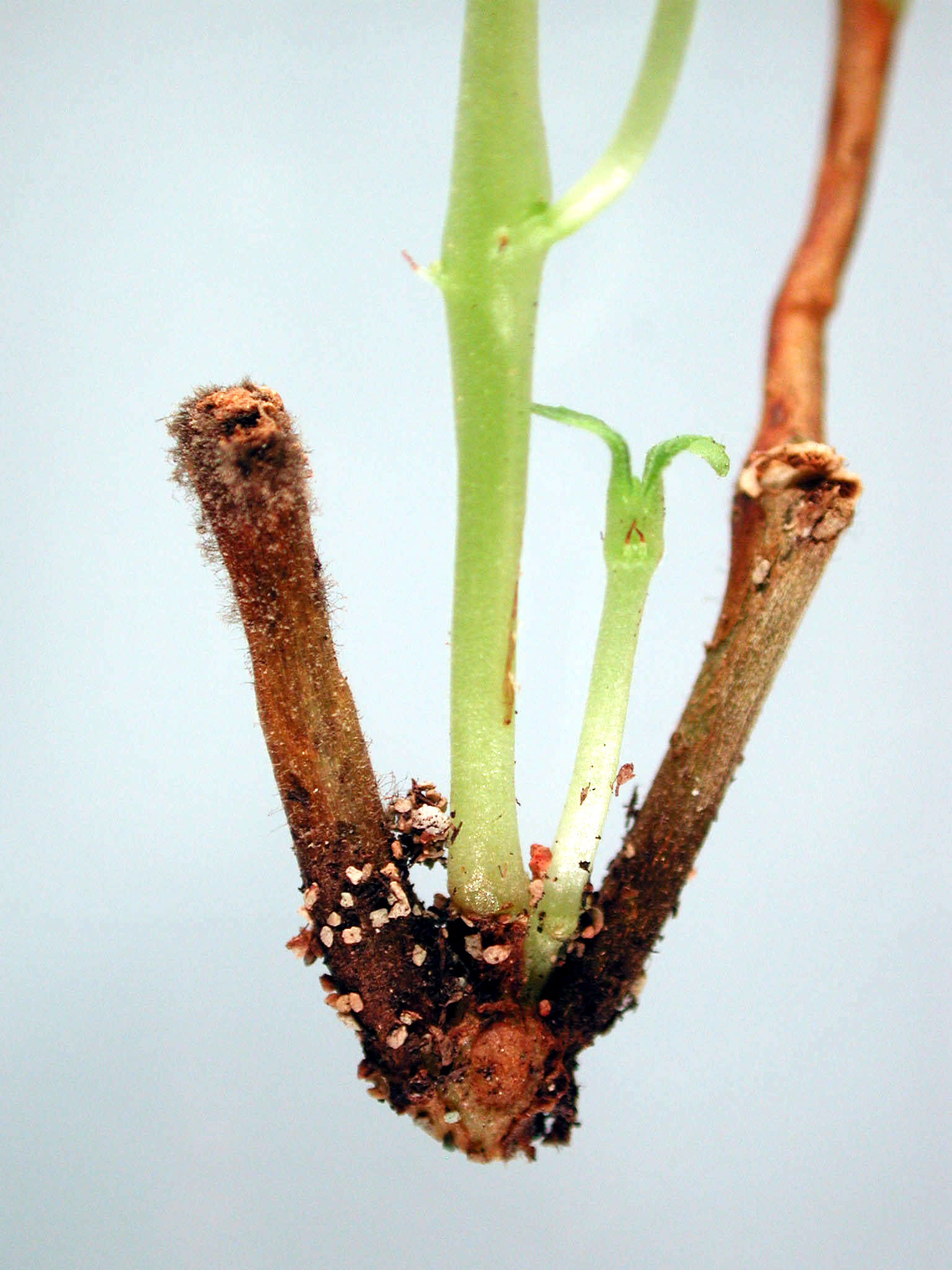
Photo by Laura Miles, MSU Plant & Pest Diagnostics. Blighted leaf tissue observed in the Muskegon area this season, likely caused by early winter damage but several plant pathogens recovered from this tissue. Blighted bud tissue of blueberries observed in late May, likely caused by freeze events. Blighted shoot tissue with characteristic anthracnose symptoms on shoot tissue. This also was likely related to early season freeze damage (Photo 5). This looks similar to a mummy berry infection, but no characteristic conidia were observed.

One sample had characteristic anthracnose symptoms on shoot tissue (Photo 3).Many can be traced back to freeze damage that occurred earlier in the season. We have received many blueberry samples with blight symptoms and pathogens present. Photo by Timothy Miles, MSU Department of Plant, Soil and Microbial Sciences. Blighted leaves are often blamed on Botrytis infections during extremely wet conditions. Phomopsis can be identified by a brown discoloration of the twig that bears the flower cluster (Photo 2). Blighted blossoms can also be caused by Phomopsis. The cause of blighted shoots and blossoms is difficult to identify unless fungal growth is visible. Pseudomonas canker ( Pseudomonas syringae)Ĭolletotrichum (anthracnose) and Botrytis are often the cause of infections during wet seasons.

Mummy berry ( Monilinia vaccinii-corymbosi) These diseases are often hard to distinguish from each other on symptoms alone (see table below).īlossom and early green fruit blight (Yes/No) Several fungi and a least one bacterium can cause blight symptoms in blueberry tissues. Dieback of the woody shoot tips and blighted blossoms are usually symptoms of several different diseases.Death of the new shoot is a symptom of mummy berry shoot strike.Death of the new shoot tip, which stops growth, is usually a symptom of a recent freeze (Photo 1).When scouting fields, keep in mind the following: Warm, wet conditions are also good for disease infections. The weather has turned warm and wet, causing blueberries to grow rapidly. These blights may be due to the freeze, disease or a combination of both. This damage manifests as twig, blossom and cane blights. Blighted tissue is apparent in many fields. We are also seeing disease symptoms in shoots and twigs. Besides damage to blossoms, we see dead shoot tips and damage to the tips of new shoots from the freeze. Growers have been evaluating flowers for freeze injury. We are three weeks past the May 9, 2020, freeze that hit southwest Michigan.


 0 kommentar(er)
0 kommentar(er)
